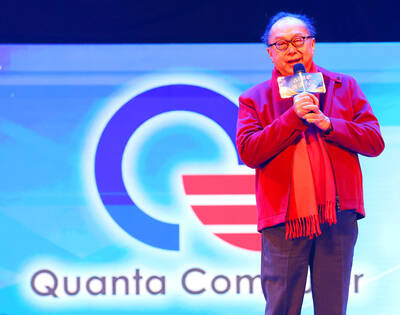Sino-American Silicon Products Inc (SAS, 中美矽晶), which makes solar cells and modules, yesterday said its revenue last year expanded 18.9 percent year-on-year to a record high of NT$81.87 billion (US$2.67 billion), with revenue at its solar business soaring 34.5 percent year-on-year to NT$10.25 billion.
Last year’s solar revenue growth proves that SAS is returning to a robust healthy growth track, though it is still heavily reliant on its silicon wafer subsidiary, GlobalWafers Co (環球晶圓), for revenue growth.
GlobalWafers is the world’s No. 3 silicon wafer supplier.
As the world’s solar installations are growing, SAS aims to keep its solar business revenue this year at a similar level as last year by boosting shipments to offset unfavorable pricing environments.
Worldwide solar installations are to grow about 17.5 percent to 315 gigawatts this year from 268 gigawatts, SAS said, citing a forecast by BloombergNEF.
Last year was a brilliant year for the company thanks to strong demand for solar panel installations at home and abroad, as nations sought to increase their solar energy resources to fight climate change, which resulted in increases in shipments, SAS chairwoman Doris Hsu (徐秀蘭) told a media gathering in Hsinchu on Wednesday.
Surges in raw material costs, including polysilicon and monosilicon solar wafers, also gave a boost to the average selling prices of solar cells and modules, the company said.
However, the cost of raw materials dropped more than 20 percent in the final two weeks of last year from the previous two weeks, and it might take some time to see prices rebound, Hsu said.
“It has a good and bad [influence],” she said. “The bad part is that revenue will be lower. The good part is that it will speed up solar installations if costs become more affordable.”
SAS this year is targeting growing its solar business revenue slightly or on a par with last year in anticipation of a drastic correction in average selling prices and the company is to prioritize the expansion of solar output and raise revenue contributions from solar energy supply, she said.
SAS has invested in three companies operating solar power plants in Taiwan, the Philippines and Canada.
The company’s solar business contributed about 13 percent of its total revenue of NT$60.67 billion during the first three quarters of last year. It received 87 percent of its revenue from semiconductor subsidiary GlobalWafers, in which it has a 51 percent stake.
The company’s new solar cell manufacturing line has entered mass production to supply large, high-efficiency solar cells, SAS said.

Intel Corp chief executive officer Lip-Bu Tan (陳立武) is expected to meet with Taiwanese suppliers next month in conjunction with the opening of the Computex Taipei trade show, supply chain sources said on Monday. The visit, the first for Tan to Taiwan since assuming his new post last month, would be aimed at enhancing Intel’s ties with suppliers in Taiwan as he attempts to help turn around the struggling US chipmaker, the sources said. Tan is to hold a banquet to celebrate Intel’s 40-year presence in Taiwan before Computex opens on May 20 and invite dozens of Taiwanese suppliers to exchange views

Application-specific integrated circuit designer Faraday Technology Corp (智原) yesterday said that although revenue this quarter would decline 30 percent from last quarter, it retained its full-year forecast of revenue growth of 100 percent. The company attributed the quarterly drop to a slowdown in customers’ production of chips using Faraday’s advanced packaging technology. The company is still confident about its revenue growth this year, given its strong “design-win” — or the projects it won to help customers design their chips, Faraday president Steve Wang (王國雍) told an online earnings conference. “The design-win this year is better than we expected. We believe we will win

Quanta Computer Inc (廣達) chairman Barry Lam (林百里) is expected to share his views about the artificial intelligence (AI) industry’s prospects during his speech at the company’s 37th anniversary ceremony, as AI servers have become a new growth engine for the equipment manufacturing service provider. Lam’s speech is much anticipated, as Quanta has risen as one of the world’s major AI server suppliers. The company reported a 30 percent year-on-year growth in consolidated revenue to NT$1.41 trillion (US$43.35 billion) last year, thanks to fast-growing demand for servers, especially those with AI capabilities. The company told investors in November last year that

Power supply and electronic components maker Delta Electronics Inc (台達電) yesterday said it plans to ship its new 1 megawatt charging systems for electric trucks and buses in the first half of next year at the earliest. The new charging piles, which deliver up to 1 megawatt of charging power, are designed for heavy-duty electric vehicles, and support a maximum current of 1,500 amperes and output of 1,250 volts, Delta said in a news release. “If everything goes smoothly, we could begin shipping those new charging systems as early as in the first half of next year,” a company official said. The new